By Dr. Gao Bingliang, School of Metallurgy, Northeastern University
Editor’s Note: This article is a companion piece to “Innovations in Aluminum Production Technology at Northeastern University, Shenyang, China,” also by Gao, which appeared in the February 2016 issue of Light Metal Age.
Introduction
The Chinese aluminum smelting industry has gone through tremendous growth during the past three decades from the minimal 800,000 tons in the 1980s to over 30 million tons at present, which is over half of the world’s total smelting capacity. This smelting capacity is also represented by its home grown reduction technology of 400 to 600 kA core production lines and unique bath chemistry. Even though the smelting growth is a reflection of the overall Chinese economy, it does not come as a surprise because there are numerous scientists and engineers who have been tirelessly working on R&D, some of whom are well known legends. Such legends include, Prof. Qiu Zhuxian (May 19, 1921 – July 28, 2006), who is considered the “Father of the Chinese Aluminum Industry” (Figure 1).
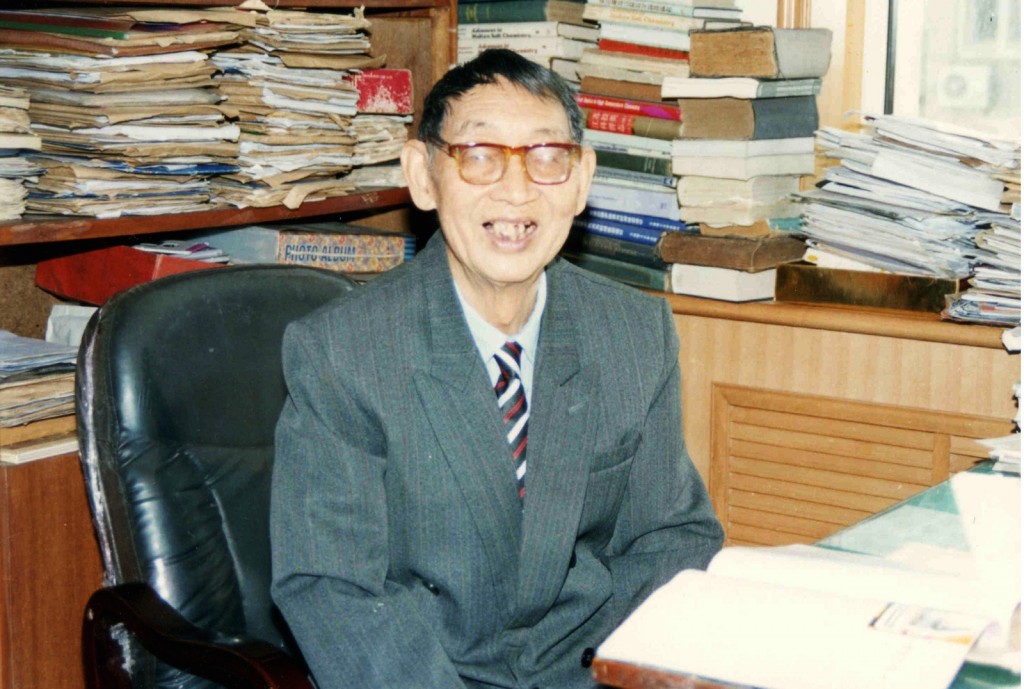
Qiu graduated from the Department of Mining and Metallurgy at Tangshan Chiao Tung University in 1943. After, he worked as an engineer at electrochemical smelters in Sichuan Province and Taiwan Province, before moving to Shanghai. In 1950, he became an engineer in Fushun Aluminum Smelter located in Fushun city, Liaoning Province, which was built on a dilapidated smelter that had been built by the Japanese during World War II and had stopped operation in 1945. Qiu became one of the new founders of the site.
During his five years stay at Fushun Aluminum Smelter, Qiu designed and built the first Chinese-designed aluminum electrolysis cell for the People’s Republic of China with help from experts from the former Soviet Union. During this time, Qiu held an aluminum industrial training course for young engineers from the smelter and for students from Northeast University (which at the time was known as the Northeastern Institute of Technology, or NEIT). Many of these students later became the backbone of the Chinese aluminum industry. In the spring of 1955, Qiu joined the Northeast Institute of Technology in Shenyang and founded the first research center for light metals in China. He was also chairman of the Scientific Commission of Molten Salts of China.
Qiu became a full professor at the university in 1978. As the director of the Light Metals Metallurgy Division, he established the first curriculum for light metals and nonferrous metallurgy in China. In 1986, the first PhD degree in light metals metallurgy was awarded to a Chinese student who had Qiu as his supervisor.
Qiu is known for his achievements in molten salt chemistry, especially physicochemical phenomena in electrochemical processes of molten salts. He invented a simple, but effective transparent aluminum electrolysis cell, which was used to study important phenomena in molten salts, such as metal dissolution, aluminum oxide dissolution, gas bubble behavior, and wetting behavior between different phases. After visiting the transparent cell at NEIT in 1987, Warren Haupin of Alcoa characterized it as “the simplest instrument, but presenting the most beautiful results” (1).
Cooperation in Norway
Qiu visited several foreign countries in his long and distinguished career, both as a guest professor and research fellow. He visited Norway many times, where he had a long-term cooperation with Prof. Kai Grjotheim (1919-2003), who was the initiator of the research on aluminum electrolysis at the University in Trondheim, which is now called Norwegian University of Science and Technology (NTNU). From 1973 to 1989, Grjotheim was professor in General and Inorganic Chemistry at the University of Oslo, but he always maintained a close and active cooperation with his old Institute of Inorganic Chemistry in Trondheim.
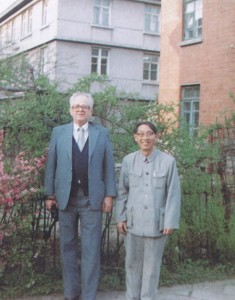
In 1980, Grjotheim was appointed an honorary professor at Northeast University in Shenyang, and that was the beginning of a fruitful and mutually beneficial cooperation with Qiu that lasted for more than 20 years (Figure 2). This resulted in numerous co-authored publications and two books written in English. In 1991, they published Molten Salt Technology, Theory and Application and, in 1998, the book Metal Production by Molten Salt Electrolysis, Especially Aluminium and Magnesium, with Halvor Kvande and Li Qingfeng as co-authors. Both books were later translated to Chinese. Qiu invited several international experts in the aluminum industry to come and conduct technical conferences on aluminum electrolysis at the Northeastern University (Figure 3).
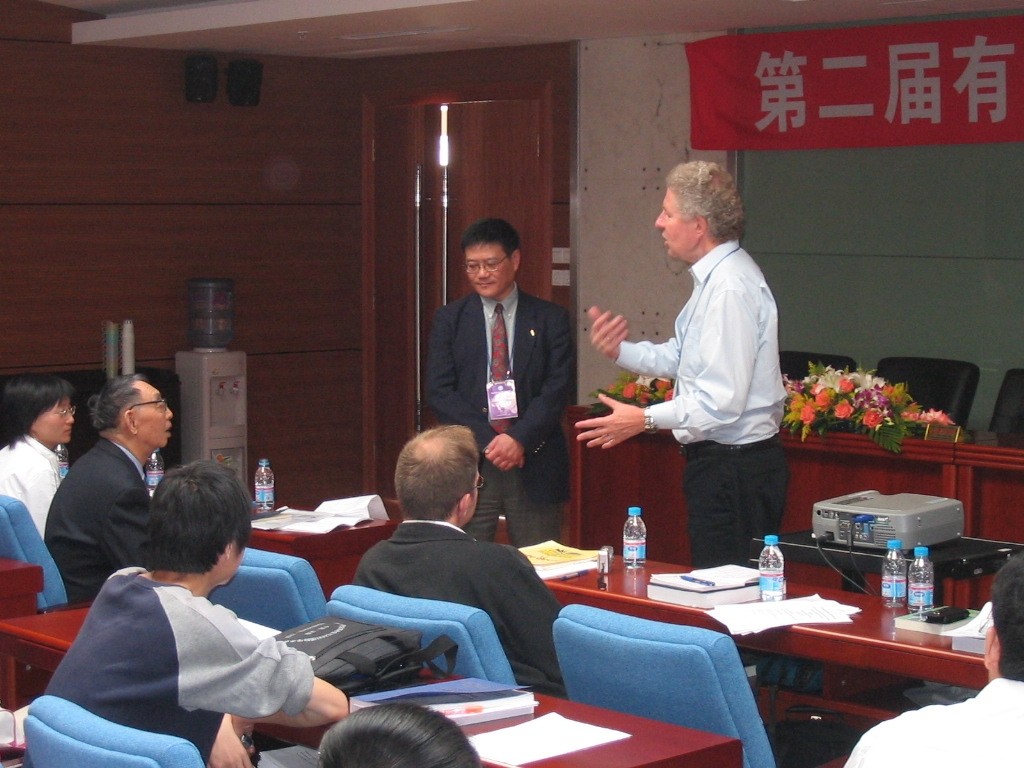
Qiu received several awards for his research and has been recognized internationally for his outstanding contributions and achievements. In Norway, he was elected as a foreign academician of the Norwegian Academy of Technological Sciences in 1987, and he was later elected as a foreign academician of the Norwegian Academy of Science and Letters in 1989.
Work in Aluminum Electrolysis
Low Temperature Electrolytes
After Hall and Héroult’s original patents, obvious data was published for aluminum electrolysis at temperatures below 900°C and at bath molar ratios below 2.0. Grjotheim and Kvande had the opinion that the low-ratio baths, capable of giving bath temperatures below 900°C, might be obtained by a combination of low bath ratio and LiF and MgF2 additions (2). Thus, it may be predicted that in the future the industry will perhaps start using a new type of bath: modified low-ratio baths with 15~40 mass% AlF3, and some LiF and MgF2. Qiu did a lot of work on aluminum electrolysis using complex electrolytes both in the laboratory and in the industry.
Qiu studied the addition of magnesium fluoride to the industrial aluminum electrolyte in 1955-1956, because of the abundant magnetite mineral sources in China. After two years of industrial tests the advantages of MgF2 were obvious: it can decrease the electrolysis temperature, increase current efficiency, and decrease energy consumption. In addition, it can help carbon particles float up to the surface of the electrolyte and keep the surface crust soft. From 1960, this technology was spread to almost all Søderberg and prebaked cells in China and it is still used in many aluminum cells today (3).
Qiu and Di tested various additives separately along with the MgF2-containing electrolyte in industrial cells from 1957 to 1973. It was found that the use of additives such as NaCl, BaCl2, and LiF could increase the electrical conductivity of the electrolyte. Some alumina produced in China contains about 0.2% Li2O, so it is then unnecessary to add LiF to the ordinary electrolyte. NaCl is the cheapest additive. Before use it must be heated to 400°C for at least 4 hours in order to dry it thoroughly. A 3% NaCl addition can decrease the bath temperature by about 10°. The gas flame gives a blue color, something like the flame of burning alcohol. Good performance results were obtained by adding 3-5 mass% NaCl to the molten electrolyte (3).
In 1988, Qiu emphasized that the main reason for the energy savings in the past 40 years, and even in the future, is a decrease in the coefficient of heat loss, which was expressed as the quantity of heat loss per unit quantity of electricity through the cells. A decrease in energy input to the cells must be balanced with a decrease in energy output (4).
Qiu and Gao obtained very high current efficiencies of 96~98% in a 200 amp laboratory-scale cell at 845°C in 2000. The cell was built with a round graphite anode with a gas hole of Φ10 mm at the center, and a square cathode and SiC-Si3N4 sidewalls. This high current efficiency was explained by the combined results of using insulating sidewalls and electrolysis at lower temperature in prebaked anode cells (5).
In 2001, Qiu and his students built a 1,000 amp test cell in a laboratory (Figure 4). This cell used prebaked anodes and insulation sidewalls made of MgO bricks. Qiu and Gao tested very acidic baths with a NaF/AlF3 molar ratio of 1.5-1.8 and with the addition of 8% NaCl. The working temperature was 800-850°C and the color of the molten bath was red. The average current efficiency was about 85%.
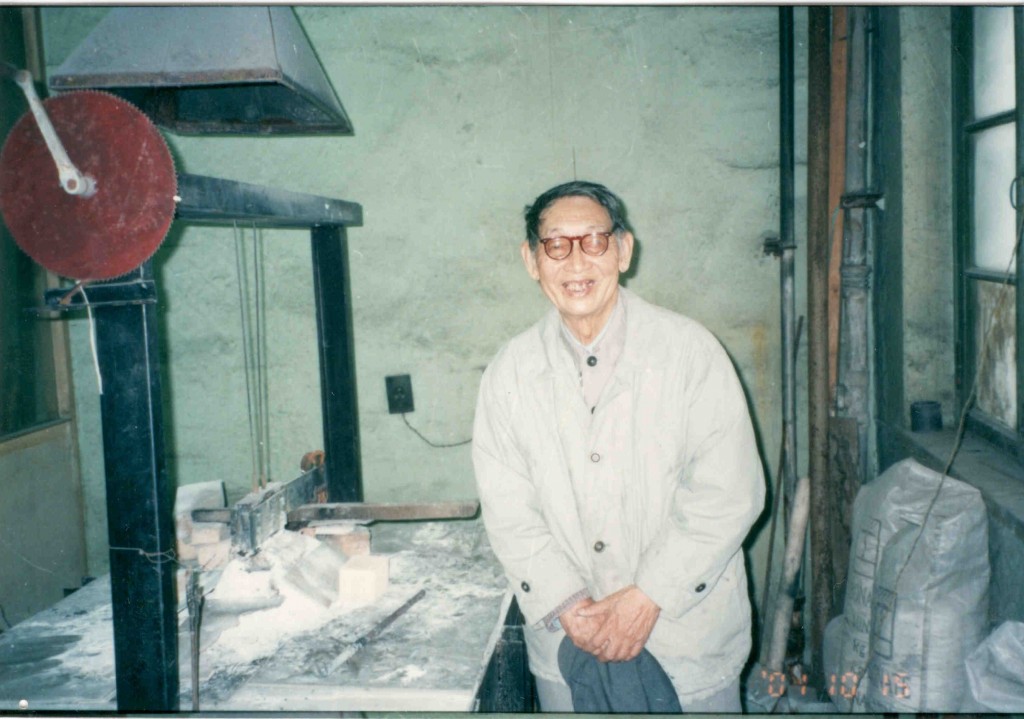
Interfacial Phenomena in Molten Salt Electrolysis
High-melting molten salts are widely used in metallurgical industries. Because of the high temperature and corrosive nature of these salts, it is difficult to experimentally study molten salt electrochemistry. Qiu developed experimental techniques used for these molten salt studies. In terms of his many experiments, he found some interesting phenomena in molten salt electrolysis, which he named “anodic repulsion and cathodic attraction.” Whatever the anode materials are, the anodic bubbles push away the electrolyte from the anode, while the gas bubbles are strongly electrostatically attracted to the anode. When the electrode plate is given a cathodic polarization, the molten drop gradually spreads out on the carbon plate. Thus, the cathode is much better wetted by the electrolyte (6-8).
Dissolution of Metals and Oxides in Molten Salts
Aluminum and alumina are soluble in molten salts, forming colloidal solutions. The experiments of aluminum and alumina dissolution were carried out in a see-through cell. W.E. Haupin of Alcoa was the pioneer of using a see-through cell, using a graphite crucible with sapphire windows. Qiu and Fan Liman designed a transparent cell in 1985, which was made of high quality fused quartz in a square form. The transparent cell had a service life of about 2 hours. As Haupin stated, “The etching which occurred, did not affect the visibility because the refraction index of the molten electrolyte and quartz are quite similar.” The molten bath was transparent before it was in contact with aluminum. When a graphite tray together with an 8 gram piece of solid aluminum was inserted into the molten bath, many tiny gas bubbles were immediately apparent on the aluminum surface.
When a strong light was passed through the molten bath, a shining metal fog that gave certain coloration can be seen from the perpendicular direction. In the case of aluminum fog, it was purple; in the case of sodium fog, it was green; and in the case of magnesium fog, it was gray. This was the “Tyndall” effect. Acting as reducing agents, the Al, Na, K, and Mg fogs were oxidized by atmospheric air and CO2 gas. Finally, the rest of the metal fog coagulated and settled down to the crucible bottom (9).
Qiu measured the metal solubility in a bath composition of 66 mass% Na3AlF6 + 28 mass% AlF3 + 3.5 mass% CaF2 + 2.5 mass% Al2O3 at 823°C; it was then 0.2 mass%.10 This value was obtained by the weight loss method in a graphite crucible with BN tube lining. This value was close to the value of 0.3 mass% obtained by Sterten, et al., who carried out the same measurement in a sintered corundum crucible with a similar composition at 800°C (11).
The solubility and dissolution behaviors of alumina in molten cryolite were measured in the mentioned see-through cell, and the time of dissolution was recorded with a camera. Sandy alumina with 10% α-Al2O3 and an intermediate alumina with 30% α-Al2O3 were compared in a complex aluminum electrolyte.
When a portion of alumina was added to the bath surface, some alumina would sink down from the surface to the bottom, but most of the alumina was floating on the surface. The sandy alumina containing less α-Al2O3 (<10%) gave longer floating times of about 450 seconds and a correspondingly shorter dissolution time of about 600 seconds. The intermediate type of alumina, which contained higher α-Al2O3 (30%) gave a shorter floating time of about 80~200 seconds and a correspondingly longer complete dissolution time of 700 seconds or longer.
An increase of the rotation speed of the Pt-Rh stirrer and a decrease of the amount of alumina addition shortened the complete dissolution time of alumina in the molten cryolite bath, which can satisfy the requirement of point feeding in modern aluminum electrolysis cells. In this sense, a continuous feeding of alumina to the cells is possible when the amount of alumina in each feeding is greatly decreased. Upon addition of alumina, some alumina floated on the bath surface, while some was stirred into the molten bath layer with the Pt stirrer. The upper alumina layer was undergoing dissolution in the molten bath layer (12).
Advanced Electrodes for Aluminum Electrolysis
Since its invention, the commercial use of the Hall-Héroult process for aluminum production has been based on alumina reduction cells with carbon electrodes. The development of inert anodes and cathodes has continued for many decades.
Since the 1980s, Qiu studied inert anodes. He tested a SnO2-based inert anode combined with TiB2-based cathode in a 100 A laboratory alumina cell for 40 days and the corrosion rate was measured to 10-4 cm/h (13) During his later years, Qiu and Zhongning Shi conducted tests of a new cermet inert anode material, Fe-Ni-Al2O3 (14). Afterwards, Qiu and Zhaowen Wang carried out 1,000 amp tests of cermet inert anode materials in the laboratory (Figure 5), using NiFe2O4-based inert anode and NiAl2O4-based inert anodes. After these tests Qiu concluded that it will take a long time before inert anodes are realized in future industrial aluminum electrolysis cells.
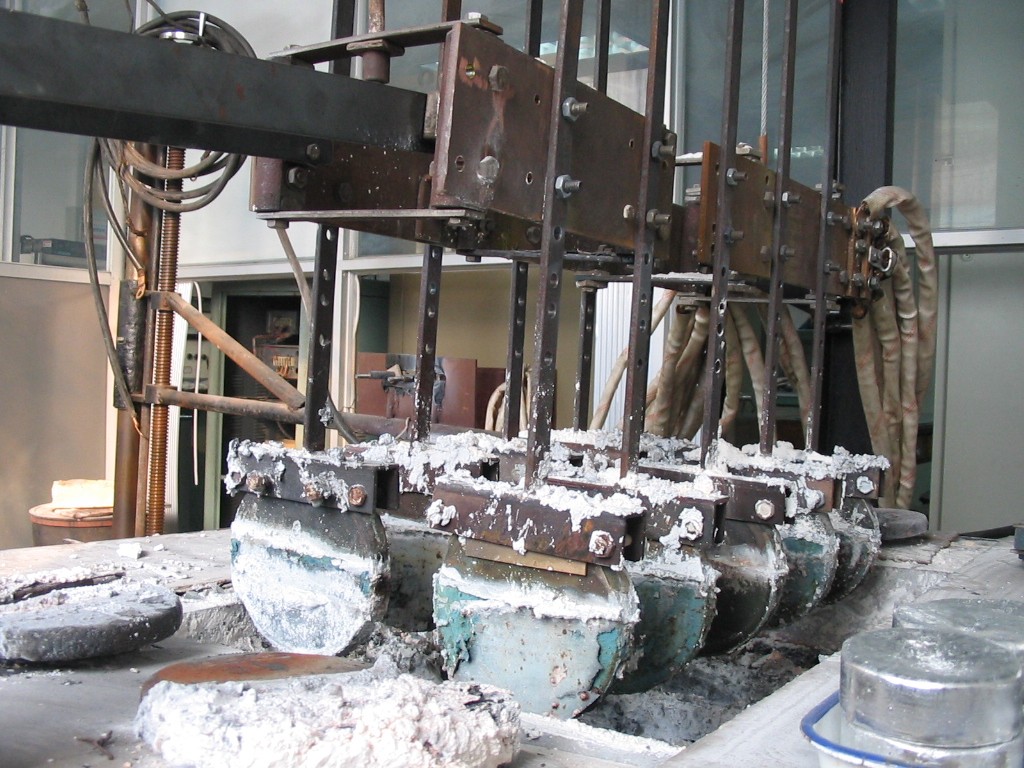
In 1990, Qiu conducted industrial trials on several 60 kA Søderberg cells using a TiB2-C coating, which was solidified at ambient temperature. This technology saved 0.2 kWh/kg Al and improved current efficiency by 1%. It was applied in several smelters with amperage varying from 60 to 300 kA after the first trial in Shandong smelter (15). Prof. Feng Naixiang conducted work to decrease the cost of a TiB2-based wettable cathode by invention of gradient cathode blocks. He proposed manufacturing the TiB2-based cathode by vibration molding with 30-60 mass% TiB2 mixed with several kinds of carbon materials at 150-160°C for 30-40 minutes. A coating with this composition was spread out and molded with a pressure of 5-8 MPa for 5-10 minutes. The test in 300 kA cells confirmed that the vibration molded coating saved 0.4 kWh/kg Al and improved current efficiency by 1-2.5% (16).
Conclusion
Qiu dedicated his whole professional life to light metals metallurgy. He pursued his scientific goals with drive and enthusiasm, continuing his work at the university even at more than 80 years of age.
During his 60 years of work on aluminum, he published more than 200 scientific papers along with 12 scientific books, as well as translating eight books. In addition, he supervised more than 50 PhD degree students. His numerous achievements were also recognized with the National Awards for Progress in Science and Technology in 1989, 1990, and 1992; the National Award for Achievements in Natural Sciences in 1991; and the Award of Ministry of Education for Achievements in Natural Sciences in 2000. In 2004, he was one of the few Chinese scientists who received the famous He-Liang-He-Li Award for Technology Development.
Acknowledgments
The author would like to express his thanks to Dr. Alton Tabereaux, consultant, in Muscle Shoals, AL; Dr. Xiangwen Wang, at the Alcoa Technical Center, Alcoa Inc.; and Dr. Halvor Kvande, professor emeritus at Norwegian University of Science & Technology in Trondheim, Norway for their review and editing of the manuscript.
References
- He Jicheng, Development of Aluminum Metallurgy, Northeastern University Press, Shenyang, China. 2001, p. 7.
- Grjotheim, K. and H. Kvande, METALL, Vol. 39, No. 6, 1985, pp. 510-513.
- Qiu Zhuxian, Aluminum Electrolysis in Prebaked Cells, 3rd edition, Metallurgical Industry Press, Beijing, China, 2005, pp. 378-396.
- Qiu Zhuxian, Light Metals 1988, pp. 591-602.
- Qiu Zhuxian and Gao Bingliang, ALUMINIUM, No. 12, 2001, pp. 974-976.
- Grjotheim, K., H. Kvande, Qiu Zhuxian, and Fan Liman, ALUMINIUM, Vol. 2, 1989, pp. 157-162.
- Qiu Zhuxian, Wei Qingbin, and You Kwantsung, ALUMINIUM, Vol. 9, 1983 pp. 753-756.
- Qiu Zhuxian, Mingjie Zhang, Fuye Hang, Yaxin Yu, Kai Grjotheim, and Halvor Kvande, Proceedings from the Ketil Motzfeldt Symposium, Trondheim, Norway, 1987, pp. 217-233.
- Qiu Zhuxian, Fan Liman, Kai Grjotheim, and Halvor Kvande, J. Appl. Electrochem., 1987, pp. 707-714.
- Qiu Zhuxian, et al., ALUMINIUM, Vol. 3, 1997, pp. 173-177.
- Sterten, A., Jun Tie, Yaxin Yu, and Qingfeng Li, Light Metals 1988, pp. 663-670.
- Qiu Zhuxian, Zhenhai Yang, Bingliang Gao, Zhaowen Wang, Shuping Sun, and Weihong Li, Light Metals 1999, pp. 467-470.
- Grjotheim, K., H. Kvande, Qiu Zhuxian, and Xue Jilai, METALL, 1988 (6), pp. 587-589.
- Zhongning Shi, et al., JOM, Vol. 55, No. 11, 2003, pp. 63-65.
- Qiu Zhuxian, Qinfeng Li, Xuesen Chen, Jing Wang, and Bing Li, Light Metals 1992, pp. 431-437.
- Ren, B., et al., Light Metals 2007, p. 1,047.
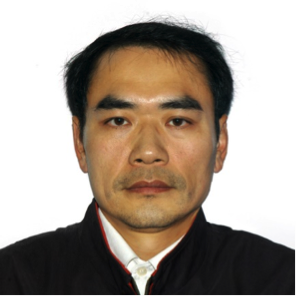 Dr. Gao Bingliang obtained his Ph.D. in Non-ferrous Metallurgy from the Northeastern University in China. He is a Full Professor at Northeastern University, where he started his career in 2000. Gao has been working on molten salts electrochemistry especially aluminum reduction technology for over twenty years. His works mainly focus on the theory of molten salts electrolysis as well as electrochemical preparation of Al-based alloys in high temperature molten salts and room temperature molten salts. Gao is the author or co-author of more than 100 scientific and technical papers, as well as two books on molten salts.
Dr. Gao Bingliang obtained his Ph.D. in Non-ferrous Metallurgy from the Northeastern University in China. He is a Full Professor at Northeastern University, where he started his career in 2000. Gao has been working on molten salts electrochemistry especially aluminum reduction technology for over twenty years. His works mainly focus on the theory of molten salts electrolysis as well as electrochemical preparation of Al-based alloys in high temperature molten salts and room temperature molten salts. Gao is the author or co-author of more than 100 scientific and technical papers, as well as two books on molten salts.
